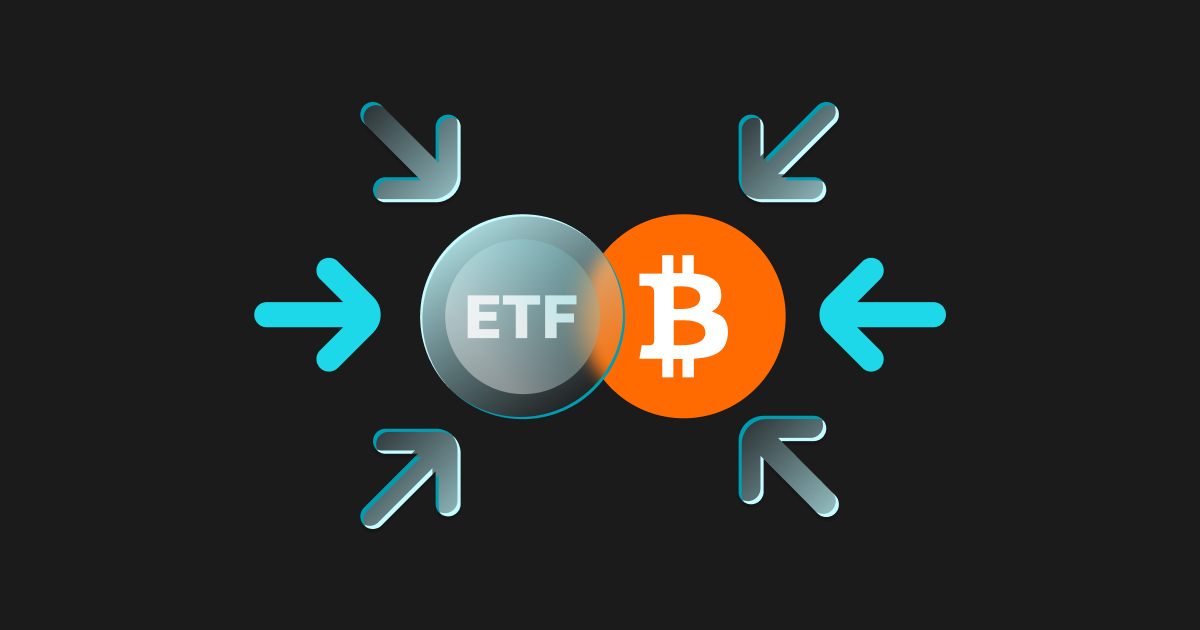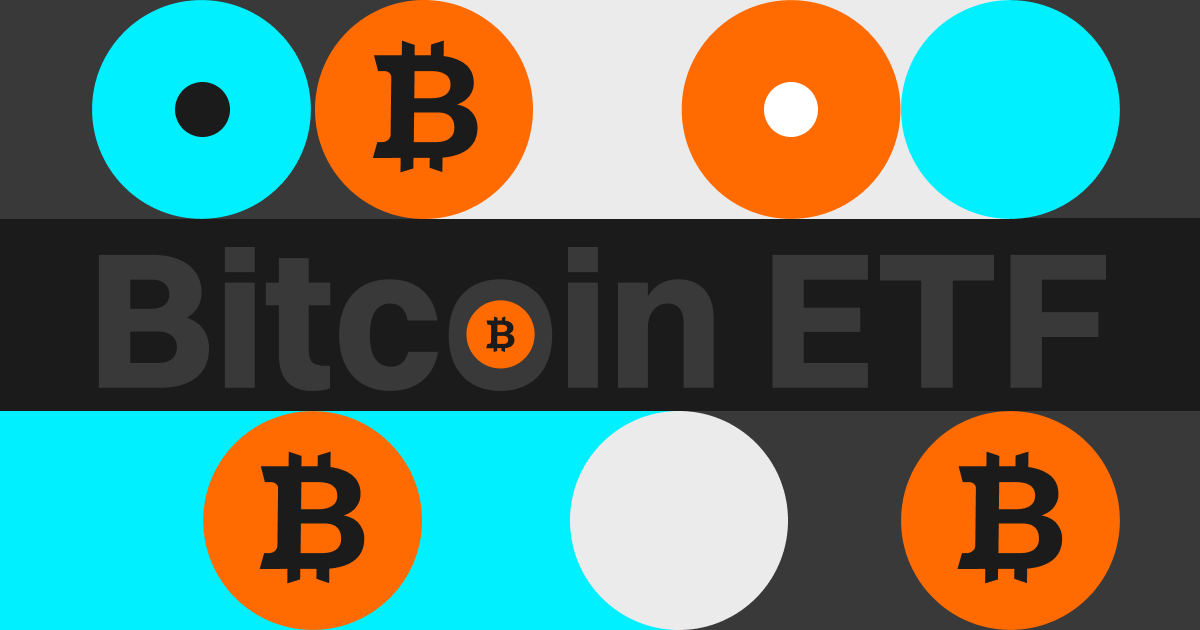
2025 Bitcoin ETF Guide: The Best ETFs to Watch This Year
Bitcoin has officially entered the mainstream in 2025, and one of the biggest drivers behind its growing popularity is the rise of Bitcoin ETFs. These exchange-traded funds let investors gain exposure to Bitcoin's price without needing to buy, store, or manage any actual cryptocurrency. Instead of navigating crypto wallets and private keys, you can simply invest through your regular stock brokerage—making Bitcoin more accessible than ever before.
With multiple spot and futures-based Bitcoin ETFs now approved and trading on major exchanges, investors have more options than ever to add crypto to their portfolios. But not all ETFs are created equal. In this guide, we’ll break down how Bitcoin ETFs work, the key differences between spot and futures products, and the best-performing Bitcoin ETFs to watch in 2025. Whether you're new to crypto or looking for a smarter way to diversify, this article has everything you need to get started.
What Are Bitcoin ETFs?

A Bitcoin ETF (exchange-traded fund) is a fund listed on traditional stock exchanges that tracks the price of Bitcoin. Instead of buying Bitcoin on a crypto exchange and managing private keys, you simply buy shares of an ETF through your broker. This gives investors exposure to Bitcoin’s price moves without owning any coins. A huge breakthrough came when the U.S. SEC approved the first Bitcoin spot ETFs in January 2024. It meant that ordinary investors could now participate in the crypto market through regulated, familiar investment products.
For example, BlackRock’s iShares Bitcoin Trust (IBIT) and Fidelity’s Wise Origin Bitcoin Fund (FBTC) – both now trade like stocks and track Bitcoin – giving Wall Street and retail investors a new, convenient way to add crypto to their portfolios.
Bitcoin ETFs have ignited a wave of interest. In the first month after launch (Jan–Feb 2024), U.S. spot Bitcoin ETFs attracted about $12 billion in inflows. Canada had already pioneered Bitcoin ETFs (e.g. Purpose Bitcoin ETF in 2021), and Asia moved quickly too (Hong Kong approved its first spot BTC ETFs in 2024). This mainstreaming of crypto – often dubbed “Bitcoin ETF era” – matters because it makes Bitcoin investment accessible to more people, lets institutional money flow in via retirement accounts, and generally bridges crypto with traditional finance.
How Bitcoin ETFs Work: Spot vs. Futures
There are two main types of Bitcoin ETFs: spot Bitcoin ETFs and Bitcoin futures ETFs. The difference lies in what each fund actually holds under the hood.
-
Spot Bitcoin ETFs buy and hold real Bitcoin (just like a gold ETF holds gold bars). Each ETF share represents a certain amount of Bitcoin stored in secure (cold) wallets. When Bitcoin’s market price changes, the ETF’s share price changes correspondingly. For example, if Bitcoin goes up 10%, the ETF’s net asset value (NAV) should rise by roughly 10% (minus fees). Fund managers custody the coins, and the ETF trades on exchanges like NYSE or Nasdaq. In short, a spot ETF directly tracks the spot price of Bitcoin.
-
Bitcoin Futures ETFs do not hold real Bitcoin. Instead, they hold Bitcoin futures contracts (standardized agreements to buy/sell Bitcoin at a future date and price on the CME). These funds track Bitcoin’s price movements indirectly through those contracts. For example, ProShares’ BITO and Valkyrie’s BTF are such ETFs. Futures ETFs allow exposure via the futures market; the fund rolls its contracts over as they expire. This can introduce extra costs (like contango rolls), so futures ETFs may diverge from Bitcoin’s spot price. In practice, futures ETFs first came to market in 2021, when the SEC wouldn’t allow spot ETFs.
In short, spot ETFs actually own Bitcoin, giving a close track of the underlying price, whereas futures ETFs hold derivatives (futures contracts) to mimic that exposure. This structural difference can matter: futures ETFs may underperform in contango markets, while spot ETFs face custody costs but have near-perfect tracking.
Buying Bitcoin vs. Investing in a Bitcoin ETF
Direct Bitcoin ownership means you buy coins on a crypto exchange and manage them in a wallet. You own the actual cryptocurrency and private keys, so you can send/receive Bitcoin or use it as you like. The upside is complete control and zero middlemen, but you face drawbacks: dealing with crypto exchanges can be confusing and risky (hacks or lost keys), and you must secure your own wallet. The price you get depends on exchange liquidity, and you may pay exchange fees.
Investing via a Bitcoin ETF is more like buying stock. You simply buy ETF shares through your regular brokerage, retirement account, or trading app. This is far simpler for many people. ETFs let those who were deterred by crypto’s complexity or unclear regulations to participate; you get Bitcoin’s price moves through a regular stock ticker. In other words, you avoid dealing with private keys or unfamiliar crypto platforms, trading through a familiar market interface.
However, there are trade-offs. With an ETF you don’t actually own the coin; you own a fund share. You pay an annual expense ratio (for management and custody) that eats into returns. And in a crash, ETF shares will lose value just like the crypto price, so risk remains. Some ETFs (especially futures-based ones) may not move perfectly with Bitcoin. In practice, if you buy Bitcoin directly you get all benefits of the coin (full custody, ability to use it), but if you buy an ETF it’s like trusting a fund manager with the coin in exchange for convenience and regulation.
Pros and Cons of Bitcoin ETFs
Advantages:
-
Ease and Accessibility: ETFs trade on stock exchanges. You can buy them through any brokerage account (even retirement plans) and use limit orders just like stocks. This lowers the barrier to entry.
-
Regulation and Oversight: Bitcoin ETFs in regulated markets are overseen by authorities (like the SEC in the U.S.). This can reduce certain risks (market manipulation, fraud) compared to unregulated crypto venues. ETFs also offer daily disclosure of holdings.
-
Liquidity: Top Bitcoin ETFs have huge trading volumes. For example, IBIT and FBTC each trade millions of dollars per day. That makes buying/selling efficient.
-
No Custody Worries: All custody (storage of the coins) is handled by the fund’s custodian. You never have to manage a private key or worry about losing access.
-
Diversification and Flexibility: As with other ETFs, you can easily add a small Bitcoin position within a broad portfolio. Some investors like the option to allocate a percentage to crypto via an ETF (and rebalance periodically) instead of holding the whole coin.
Drawbacks:
-
Fees: Bitcoin ETFs charge management fees (expense ratios) to cover costs. These are often higher than fees on typical stock ETFs. For example, ProShares’ BITO (a futures ETF) charges ~0.95% per year, whereas big Bitcoin spot ETFs typically charge about 0.20–0.25%.
-
No Direct Ownership: When you buy a Bitcoin ETF, you never have the coin itself. This means you can’t use Bitcoin outside the market (e.g. to send to someone or use in a blockchain app). You also depend entirely on the fund’s promises and security.
-
Tracking Risk (Futures Funds): If you hold a futures-based Bitcoin ETF, its performance may deviate from actual Bitcoin prices due to the cost of rolling contracts. Spot ETFs largely avoid this. But all ETFs still carry market risk: a 50% plunge in Bitcoin means about a 50% loss in the ETF too.
-
Limited Transparency for Some Structures: Some earlier funds (like the old Grayscale Trust) traded at big premiums or discounts to Bitcoin’s actual value. Modern ETFs are designed to minimize this, but it’s worth noting: the fund’s share price might not always be exactly 1:1 with Bitcoin NAV.
-
Market Manipulation Concerns: A common worry is that large holders of ETF shares (or the fund itself) could influence prices. For example, massive ETF inflows or outflows could amplify Bitcoin volatility. Strict regulations and arbitrage mechanisms mitigate this, but it’s still a consideration.
Top Bitcoin Spot ETFs in 2025
Spot Bitcoin ETFs are the hottest trend in 2025. These funds actually hold real Bitcoin, giving investors direct exposure to the asset’s price without owning or managing crypto themselves. Since the U.S. approved its first spot Bitcoin ETFs in early 2024, billions of dollars have flowed into these products—and they’re quickly becoming a preferred option for long-term investors.
Here are some of the best-performing and most talked-about spot Bitcoin ETFs this year:
-
iShares Bitcoin Trust (IBIT) – Launched by BlackRock, this ETF has rapidly become a market leader. With deep liquidity and strong institutional backing, IBIT is a go-to choice for many.
-
Fidelity Wise Origin Bitcoin Fund (FBTC) – Fidelity’s offering is another top contender, especially popular among traditional investors for its low fees and strong reputation.
-
ARK 21Shares Bitcoin ETF (ARKB) – Backed by Cathie Wood’s ARK Invest and 21Shares, this fund is favored by innovation-focused investors who want exposure to disruptive tech.
-
VanEck Bitcoin Trust (HODL) – With a catchy ticker and competitive fee structure, HODL is gaining traction, particularly among retail investors.
These spot ETFs are appealing because they mirror the actual price of Bitcoin more closely and don't rely on derivatives. If you're bullish on Bitcoin long-term and prefer a “buy and hold” strategy, a spot ETF could be your best bet in 2025.
Top Bitcoin Futures ETFs in 2025
Futures-based Bitcoin ETFs have been around longer, and while they don’t hold actual Bitcoin, they offer exposure through contracts that speculate on its future price. These ETFs are great for short- to medium-term strategies, and often appeal to more active or tactical investors.
Here are a few futures-based ETFs that continue to perform well in 2025:
-
ProShares Bitcoin Strategy ETF (BITO) – The first U.S. Bitcoin futures ETF, BITO remains popular due to its high liquidity and strong track record since its launch in 2021.
-
Valkyrie Bitcoin Strategy ETF (BTF) – Known for its more aggressive positioning and tactical exposure to futures contracts, BTF is often used by more experienced crypto traders.
-
VanEck Bitcoin Strategy ETF (XBTF) – This fund takes a tax-efficient approach and is preferred by investors looking to minimize capital gains over time.
Futures ETFs don’t track the spot price of Bitcoin as closely and may suffer from something called “contango”—a condition where futures prices are higher than current prices, potentially eating into returns over time. However, they still offer a regulated, accessible way to gain exposure to crypto markets without diving into the underlying assets.
Conclusion: Should You Invest in Bitcoin ETFs in 2025?
Bitcoin ETFs have opened a new gateway into crypto investing—one that’s safer, simpler, and more familiar for traditional investors. Whether you choose a spot ETF for direct exposure to Bitcoin or a futures ETF for more active strategies, 2025 offers more options than ever to participate in the digital asset space without the technical hurdles.
For beginners or anyone unsure about crypto wallets and private keys, Bitcoin ETFs are a smart way to start your journey. Just like with any investment, it’s important to do your homework, understand the risks, and pick the ETF that best fits your goals. With growing adoption, increased regulatory clarity, and strong institutional interest, Bitcoin ETFs are likely to remain one of the biggest crypto investment trends of 2025—and beyond.
Frequently Asked Questions (FAQs)
Q1: What’s the difference between spot and futures Bitcoin ETFs?
Spot ETFs hold actual Bitcoin, while futures ETFs invest in contracts that bet on Bitcoin’s future price. Spot ETFs are better for long-term exposure; futures ETFs are more for short-term strategies.
Q2: Are Bitcoin ETFs safe?
Yes. Bitcoin ETFs are regulated and offered by trusted financial institutions. While they reduce technical risks, the price of Bitcoin can still be volatile.
Q3: Are Bitcoin ETFs taxed like stocks?
Generally, yes. Gains from Bitcoin ETFs are taxed like capital gains on traditional investments, which is simpler than crypto tax rules.
Q4: Which are the most popular Bitcoin ETFs in 2025?
iShares IBIT, Fidelity FBTC, ARK 21Shares ARKB, ProShares BITO, and VanEck HODL are among the most widely used.
Q5: Who should invest in a Bitcoin ETF?
Anyone who wants exposure to Bitcoin in a safer, regulated way—especially beginners or traditional investors who prefer not to manage crypto directly.
Register now and explore the wonderful crypto world at Bitget!
Disclaimer: The opinions expressed in this article are for informational purposes only. This article does not constitute an endorsement of any of the products and services discussed or investment, financial, or trading advice. Qualified professionals should be consulted prior to making financial decisions.



